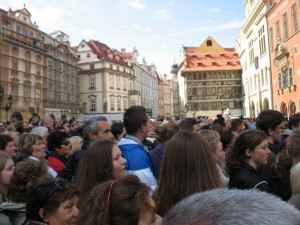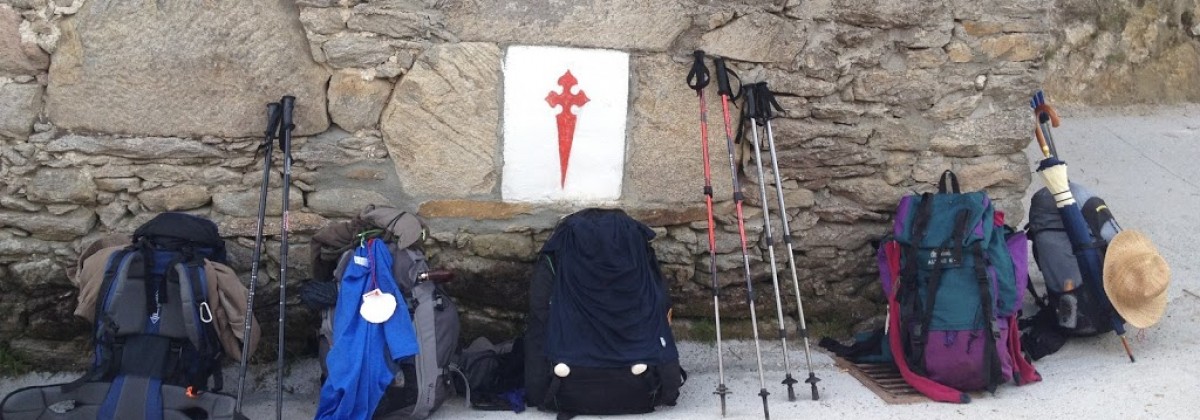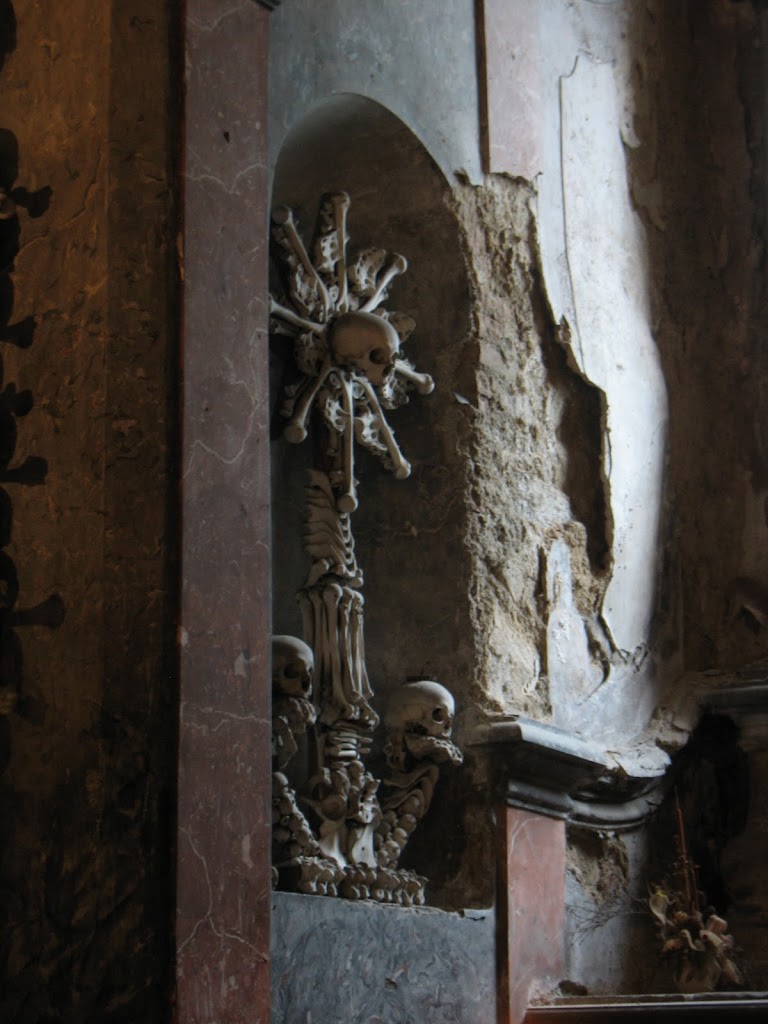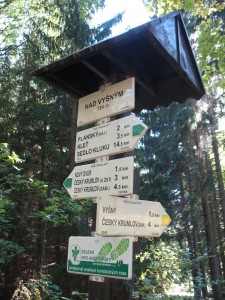 the Astronomical Clock is perhaps the most iconic image of Prague. it is certainly one of the most visited sites in the city, particularly at midday when people crowd into the square next to the Town Hall and crane their necks for a glimpse of the noon display. the oldest part of the clock — the mechanical clock and astronomical dial — dates from the early 1400s (1410). the current clock has three components: the astronomical dial, which includes depictions of location of the Sun and Moon; a calendar dial with ornate medallions representing each month; and the Apostles that parade past the two doors at the top (closed in the picture) to mark each hour. (for more on how to read the clock, check out the Clock’s Wikipedia page.)
the Astronomical Clock is perhaps the most iconic image of Prague. it is certainly one of the most visited sites in the city, particularly at midday when people crowd into the square next to the Town Hall and crane their necks for a glimpse of the noon display. the oldest part of the clock — the mechanical clock and astronomical dial — dates from the early 1400s (1410). the current clock has three components: the astronomical dial, which includes depictions of location of the Sun and Moon; a calendar dial with ornate medallions representing each month; and the Apostles that parade past the two doors at the top (closed in the picture) to mark each hour. (for more on how to read the clock, check out the Clock’s Wikipedia page.)
for centuries, legend held that renowned the clockmaker called Hanuš, or Jan of Ruze, created the clock and refused to share the designs with anyone. when the city elders heard rumors that Hanuš planned to construct an even more intricate and elaborate clock in another city, they had him blinded so that no other city could compete with their Clock. taking revenge, Hanuš damaged the clock such that no one could ever repair it to its initial, smooth working condition. unfortunately, documents uncovered in the 1960s proved this legend simply that; while Hanuš possibly did repair work the clock, the man who constructed the mechanics of the astronomical dial was actually Mikulas of Kada, working in cooperation with Jan Sindel, a professor of astronomy at Charles University.
 a tale of revenge from a bitter clockmaker makes a much better story as to why the Clock broke down so routinely, especially when it more or less broke down all together in the early 18th century and thereafter remained motionless for nearly a century. retreating Nazis set fire to the buildings on the southwest side of the Old Town Square, severely damaging the Clock in 1945. once again, restoration took place and within three years the improved mechanics had the clock chiming out Central European Time (rather than Old Czech Time, wherein 24 marked sunset, a time which varied by up to four hours depending on the season.)
a tale of revenge from a bitter clockmaker makes a much better story as to why the Clock broke down so routinely, especially when it more or less broke down all together in the early 18th century and thereafter remained motionless for nearly a century. retreating Nazis set fire to the buildings on the southwest side of the Old Town Square, severely damaging the Clock in 1945. once again, restoration took place and within three years the improved mechanics had the clock chiming out Central European Time (rather than Old Czech Time, wherein 24 marked sunset, a time which varied by up to four hours depending on the season.)
(if you’re inclined, a better explanation of the Prague Clock.)



























